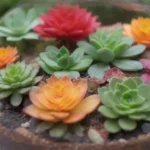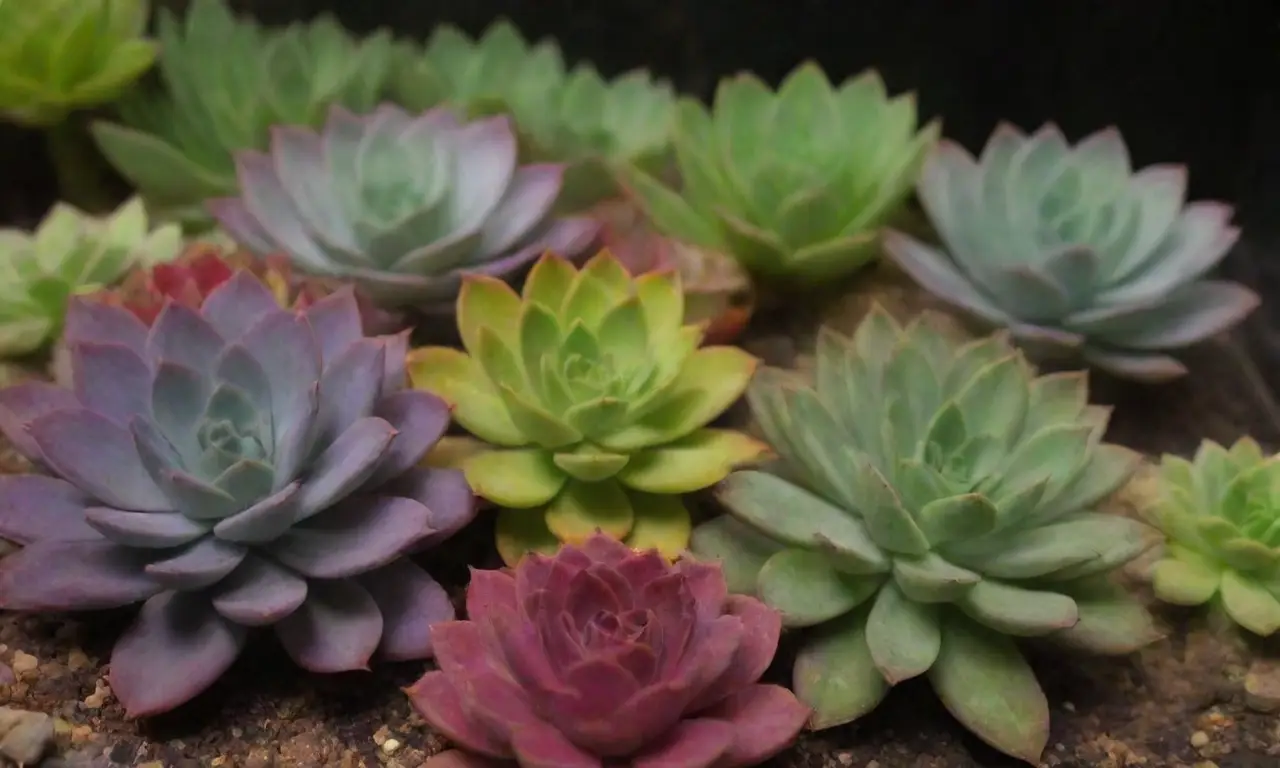
Creating a Closed Terrarium: The Science Behind Succulents

Introduction
The world of gardening has evolved significantly over the years, offering enthusiasts various methods to cultivate plants indoors, one of which is the closed terrarium. This unique ecosystem not only provides a visually appealing decoration for homes and offices but also acts as a self-sustaining environment, creating a perfect habitat for specific types of plants, like succulents. With the rise in popularity of indoor gardening, understanding the science behind creating closed terrariums can help both novices and seasoned gardeners elevate their skills and enjoy the beauty of these little green worlds.
In this article, we will delve into the fascinating science of closed terrariums. We'll explore the characteristics of succulents and why they make ideal plants for such musty little ecosystems. Additionally, we will provide a step-by-step guide on assembling your own closed terrarium while highlighting the critical factors that contribute to its success. By the end of this article, you will have a comprehensive understanding of how closed terrariums work and how to maintain them with succulents thriving inside.
Understanding Closed Terrariums
Closed terrariums are essentially miniature ecosystems that contain a variety of plants, soil, and decorative elements within a transparent container, such as glass or plastic. These containers can take many forms, from simple jars to elaborate glass sculptures, making them a versatile addition to any space. One of the defining characteristics of a closed terrarium is its ability to recycle moisture and nutrients in a closed loop, creating an ideal environment for certain plants to flourish.
The Environmental Benefits of Closed Terrariums
One of the most intriguing aspects of closed terrariums is their ability to replicate a natural environment that supports plant growth. This is primarily achieved through a process known as transpiration. In a closed system, moisture released by the plants during transpiration condenses on the inner surfaces of the container and eventually drips back into the soil, effectively creating a water cycle within the terrarium.
This cycle not only helps maintain humidity levels but also reduces the need for frequent watering, which can be particularly beneficial for busy individuals or those new to plant care. Moreover, the closed environment minimizes evaporation, allowing plants to conserve water efficiently. Thus, a closed terrarium can serve as a small-scale representation of our planet's ecosystems while promoting sustainable gardening practices.
The Ideal Conditions for Succulents
Succulents are specialized plants that have adapted to store water in their leaves, stems, and roots, making them well-suited for closed terrariums. Unlike other houseplants, succulents thrive in low-humidity environments, which makes them a perfect choice for this type of container garden. When selecting succulents for your terrarium, it is essential to choose varieties that can tolerate occasional fluctuations in moisture and are not prone to rot, such as Echeveria, Haworthia, and Jade plant (Crassula ovata).
Additionally, succulents prefer bright, indirect sunlight, which can be achieved with a well-placed terrarium near a window. Some plants can even tolerate artificial light, making them adaptable for office spaces or areas with limited natural light. Understanding these environmental conditions is critical for maintaining the health of succulents in a closed terrarium and ensuring their longevity.
 Seasonal Succulent Terrarium Ideas for Every Time of Year
Seasonal Succulent Terrarium Ideas for Every Time of YearThe Anatomy of a Closed Terrarium
Creating a closed terrarium involves more than simply placing plants inside a container. Each element plays a vital role in the overall health of your miniature ecosystem. Let's break down the key components necessary for a successful closed terrarium.
Choosing the Right Container
The choice of container impacts various factors, from aesthetics to plant health. An airtight container can create an optimal environment for humidity control, while a vented container can provide better airflow that helps prevent mold or mildew growth. Clear glass containers allow sunlight to penetrate easily, promoting photosynthesis, while also allowing you to observe the growth of your plants.
Consider the size of your chosen container as well, bearing in mind that larger containers can support more complex ecosystems but also require more maintenance. Choose one with a wide opening to facilitate planting and care.
The Soil Mix
The soil used in your closed terrarium is crucial for supporting healthy plant life. Succulents prefer well-draining soils, so it's essential to create a mix that allows excess water to escape while also retaining moisture needed for the plants. A combination of potting soil, perlite, and sand creates an ideal mix for succulents. The potting soil provides nutrients, while perlite and sand enhance drainage, helping to prevent root rot and other moisture-related issues.
Layering your soil appropriately is also important. Start with a bottom layer of small stones or pebbles that will act as drainage, followed by a layer of activated charcoal to help filter the water and prevent odors. Finally, add your succulent soil mix on top for planting.
The Planting Process
Once you have collected your materials, the next step is planting your succulents. Before you begin, ensure that each plant is free from pests or diseases. Use a small shovel or spoon to create small pockets in the soil mix for planting. It’s advisable to plant succulents at varying heights to create visual interest while ensuring not to crowd them too closely together. Each plant should have enough space for growth and air circulation.
After planting, gently pack the soil around the base of each plant to stabilize them. Avoid overwatering at this stage, as the closed environment will create humidity levels that can cause the soil to become saturated. Instead, let your terrarium settle for a while to establish its atmosphere.
 Creating an Indoor Garden: Succulent Terrariums for Your Home
Creating an Indoor Garden: Succulent Terrariums for Your HomeMaintaining Your Closed Terrarium

Once you have set up your closed terrarium, it’s essential to monitor its health and environment continuously. An enclosed ecosystem is self-sustaining to a degree, yet it still requires a few attentional tweaks to ensure everything runs smoothly.
Light and Temperature
As mentioned earlier, succulents thrive on bright, indirect light. Ideally, place your closed terrarium in a location where it can receive ample sunlight without exposing it to direct rays, which can scorch the leaves. During the hot months, it may be necessary to rotate the terrarium to ensure even light exposure on all plants.
In terms of temperature, succulents generally prefer conditions between 60°F and 80°F (15°C - 27°C). Temperature fluctuations can impact plant health, so regular monitoring is vital. If you notice condensation forming on the glass, that’s a sign of higher humidity levels, and you may consider removing the lid temporarily to allow for some airflow.
Watering and Humidity
The key to caring for succulents in a closed terrarium is understanding their watering needs. Given that these plants store water and the terrarium environment can create humidity, there is little need for water replenishment. Observe the moisture level of the soil and only water should it feel dry to the touch. Improper watering is a common downfall for indoor gardeners, so keeping a close eye on your terrarium is essential.
In general, fostering the right humidity levels in a closed terrarium will require some trial and error. If you notice an excess of moisture leading to mold growth or droopy leaves, it may be time to research solutions—perhaps a brief removal of the lid or adjusting the watering routine.
Pests and Problems
While a closed terrarium can effectively minimize pest invasions, problems can still arise. Keep an eye out for common issues like mealybugs, aphids, and fungus gnats. If any signs of pests appear, isolate the affected plant immediately and treat the area with insecticidal soap or neem oil. Regularly checking your terrarium aids in early detection of any issues, allowing you to address them promptly.
 Planting Succulents: The Right Way to Arrange Your Terrarium
Planting Succulents: The Right Way to Arrange Your TerrariumFungal growth can also be a common problem in humid environments. If you observe any mold developing, you may need to increase ventilation or adjust your watering schedule. Preventive measures include keeping the terrarium clean by periodically removing any dead leaves and debris to discourage mold spores.
Conclusion
Creating a closed terrarium with succulents is not only a delightful and engaging project but also provides insights into the intricate science of plant life. By understanding the unique needs of these water-storing plants and implementing a sustainable ecosystem within a glass container, you are cultivating not just a garden, but a thriving ecosystem encapsulated in a piece of home decor.
As you embark on this journey of indoor gardening, remember the importance of observation and care in maintaining the health of your closed terrarium. Monitoring environmental conditions, providing proper light, and understanding watering practices will significantly contribute to your plants' success.
Embrace the beauty of nature as you create your closed terrarium! With proper execution, you’ll enjoy the lush aesthetics and potentially have a conversation starter in your home or office. Nurturing this living glass garden offers a connection to nature, a sense of tranquility, and an appreciation for the delicate balance found in ecosystems. Remember, every closed terrarium is a testament to patience, creativity, and the wonders of biology, waiting to thrive under your care.
If you want to read more articles similar to Creating a Closed Terrarium: The Science Behind Succulents, you can visit the Terrarium ideas category.

You Must Read